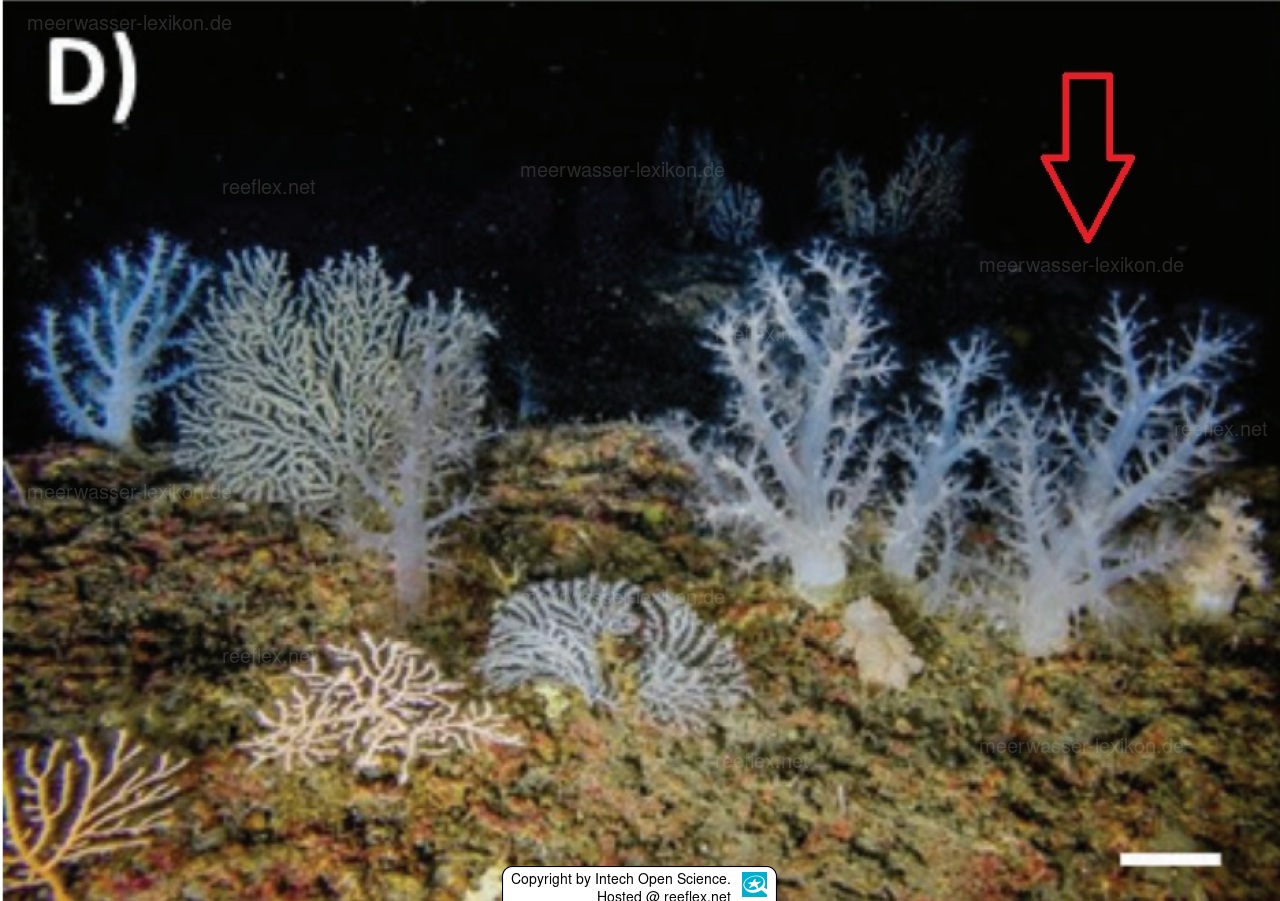Info
Chironephthya mediterranea is a rare species of soft coral with branched, tree-like, upright colonies that are orange-white in color and is currently only known from the western Mediterranean Sea.
Chironephthya mediterranea lives on muddy and sandy bottoms, attached to shells and pebbles.
The size of 9.5 cm given in the first description refers to a colony in preserved condition.
The stem of the soft coral is attached to a hard substrate and does not extend beyond the dimensions of the basal stem.
The branches are rigid and brittle due to the numerous large and densely packed sclerites in the colony wall.
The polyps are distributed along the entire length of the stem and branches, sometimes densely packed at the ends, but never limited to those areas.
A few individual polyps may also be present on the main stem.
The polyps are directed upward, completely retractable into the calyxes, but often partially extended in preserved material.
The stalk, main stems, branches, and polyps of the living and preserved colony are whitish in color, except for the orange pharynx.
Habitat and depth distribution
Chironephthya mediterranea was found at the edge of the continental shelf, on the upper continental slope and on the flanks of the Son Bou Canyon at a depth of 115 to 200 meters, with most specimens occurring between 150 and 185 m.
The colonies grew mainly on rocky ground and boulders, both substrates could be easily covered with a fine sediment layer.
Occasionally, isolated colonies were found on gravelly ground and on dead mussel remains.
The colonies grew in a wide range of inclinations, from slightly sloping substrates to almost vertical walls.
The benthic species most commonly associated with Chironephthya mediterranea were the gorgonian Bebryce mollis (Philippi, 1842), Swiftia pallida (Madsen 1970), Viminella flagellum (Johnson, 1863 [see Fig. 10c]), the antipatharia Leiopathes glaberrima (Esper 1788) and Antipathes dichotoma (Pallas, 1766), and two Demospongiae species, Poecillastra compressa (Bowerbank 1866) and Phakellia robusta (Bowerbank, 1866).
Geographical distribution
Currently, Chironephthya mediterranea is only known from the northwestern Mediterranean (Balearic Islands).
The overview https://grupo.us.es/becaus/divulga/EXPO/35_Semana2020.html indicates that the soft coral can grow up to 40 cm in size.
Chironephthya mediterranea lives on muddy and sandy bottoms, attached to shells and pebbles.
The size of 9.5 cm given in the first description refers to a colony in preserved condition.
The stem of the soft coral is attached to a hard substrate and does not extend beyond the dimensions of the basal stem.
The branches are rigid and brittle due to the numerous large and densely packed sclerites in the colony wall.
The polyps are distributed along the entire length of the stem and branches, sometimes densely packed at the ends, but never limited to those areas.
A few individual polyps may also be present on the main stem.
The polyps are directed upward, completely retractable into the calyxes, but often partially extended in preserved material.
The stalk, main stems, branches, and polyps of the living and preserved colony are whitish in color, except for the orange pharynx.
Habitat and depth distribution
Chironephthya mediterranea was found at the edge of the continental shelf, on the upper continental slope and on the flanks of the Son Bou Canyon at a depth of 115 to 200 meters, with most specimens occurring between 150 and 185 m.
The colonies grew mainly on rocky ground and boulders, both substrates could be easily covered with a fine sediment layer.
Occasionally, isolated colonies were found on gravelly ground and on dead mussel remains.
The colonies grew in a wide range of inclinations, from slightly sloping substrates to almost vertical walls.
The benthic species most commonly associated with Chironephthya mediterranea were the gorgonian Bebryce mollis (Philippi, 1842), Swiftia pallida (Madsen 1970), Viminella flagellum (Johnson, 1863 [see Fig. 10c]), the antipatharia Leiopathes glaberrima (Esper 1788) and Antipathes dichotoma (Pallas, 1766), and two Demospongiae species, Poecillastra compressa (Bowerbank 1866) and Phakellia robusta (Bowerbank, 1866).
Geographical distribution
Currently, Chironephthya mediterranea is only known from the northwestern Mediterranean (Balearic Islands).
The overview https://grupo.us.es/becaus/divulga/EXPO/35_Semana2020.html indicates that the soft coral can grow up to 40 cm in size.







 Intech Open Science
Intech Open Science


